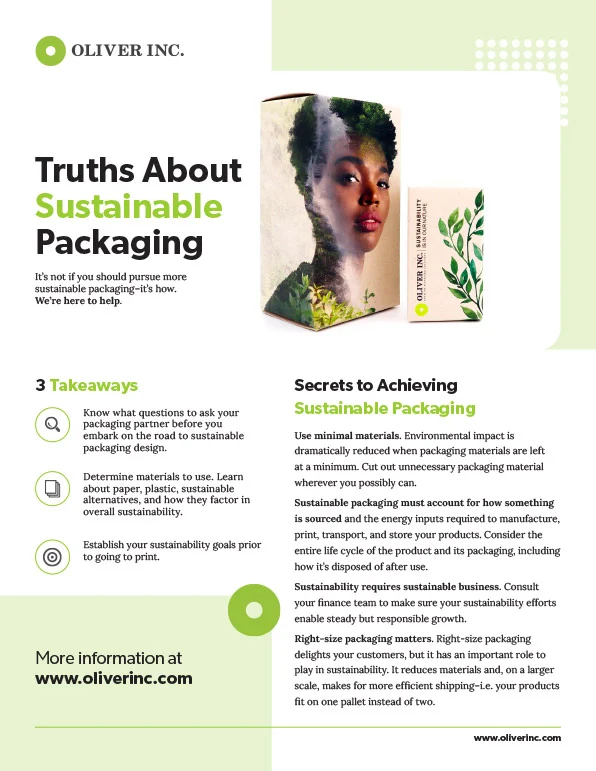Private Vs. Branded Labels for OTC Products
Posted by Oliver Inc. on 7th Oct 2021
National over-the-counter (OTC) brands reign in many markets, but that shouldn’t deter smaller companies or regional firms from meaningfully competing with them. In fact, advancements in printing and packaging technology, specifically extended gamut printing, have opened possibilities for private and white label products.
In simple terms, extended gamut printing provides a time-efficient and cost-effective way for private label brands to combine multiple SKUs on one press run. While partnering with manufacturers of name-brand products, retailers can utilize pharmaceutical packaging and labeling and under their own brand.
What Is Private Labeling?
Private labeling is when a retailer partners with a manufacturer who agrees to sell them a version of their product but allows the retailer to resell it under their own brand and packaging.
A private label, or ‘store brand,’ may have slight variations in the product, and the retailer is given exclusive rights to resell it under their in-house brand.
Consider an OTC immune support dietary supplement manufactured by a national brand, which can be found in many grocery stores across the United States.
Now, suppose a regional chain of grocery stores in the Mid-Atlantic wanted to have their own private label version. They would contract with this manufacturer for a unique variant of the dietary supplement which deviates from a generic version (see white labels below). These differences can be in composition, specific ingredients, or quantities, for example.
The manufacturer produces the dietary supplement and the regional chain designs and packages the product under its own in-house brand. It’s quite common for a private label product to appear on the shelf next to the manufacturer’s national brand, but the private label is usually sold at a lower price.
Notably, the manufacturer can’t sell this exact same product to any other retailer for potential resell. It has been designed specifically for the regional chain to use under their proprietary brand and labeling. Thus, private labeling enables a manufacturer to have a guaranteed revenue stream without having to market another product.
And retailers benefit from being able to control the branding, foster more customer loyalty to their store, and generate more profit from customers who may not be willing to pay more for the national brand’s product.
What Is White Labeling?
Similar to private labeling, white labeling involves a retailer packaging and reselling a manufacturer's OTC product to consumers. However, in this case, the manufacturer is selling a generic product that may be bought and repackaged by a variety of retailers. In other words, the manufacturer controls the ingredients, composition, and qualities involved in the product, without modifying them for any particular retailer.
All retailers relying on white labels are reselling the same generic OTC product but use their own in-house branding and packaging.
For instance, suppose the aforementioned regional chain of grocery stores wants to sell an antacid under their own brand and packaging. They might reach out to the manufacturer of a national brand, and contract with them to purchase a generic version of their antacid. This generic version is already resold by other retailers across the country using their respective brands, but this regional chain wants to resell it under their brand.
Since the product is generic, the regional chain may face competition with other retailers selling their own white-label products. However, similar sales and marketing logic applies.
By reselling the antacid under their own brand, they can control the marketing, nurture customer loyalty, and sell their white label product at a lower price, while not having to manufacture a new proprietary product.
What Is Branded Labeling?
In contrast with private and white labels, branded labeling, or ‘name brands,’ includes products packaged under the manufacturer’s own brand, typically national. Branded labels for OTC products maintain marketing strength due to the recognition as national brands and assurance of high-quality production.
Manufacturers are able to charge more for this reason, but, as already outlined, that doesn’t prevent them from selling their product to other retailers for white label or private packaging.
Extended Gamut Printing Is a Game-Changer
Consumers are accustomed to colors used by national OTC brands. They quickly tell shoppers what to expect from a product. Pink implies stomach relief. Purple is associated with nighttime cold and flu relief, while orange connotes daytime cold and flu relief. Red is connected to sinus relief.
Furthermore, national OTC firms rely on very precise colors to reinforce their brand.
To achieve this color accuracy, brands depend on extended gamut printing. Going above and beyond the traditional four-color process (CMYK), EG adds orange, green and, violet to create a 7 color process that enables brands to nearly match more than 90% of Pantone Matching System colors. In addition to increased precision, EG is speedy and cost-effective, allowing for multiple white label products to be run at the same time. You could have a private or white label cold relief product for two separate retailers running simultaneously.
So, if you plan to implement white or private labels for OTC products, be certain you take advantage of extended gamut printing. It’s a cost-effective, efficient printing technique that produces eye-catching packaging and labels.
Partner with Oliver for access to more than 1,800 colors with the PANTONE® Extended Gamut. We can meet brands’ allowable color shift from the spot color standard to a ΔE of <=2.8 on 76% of EG colors. Ask us how we can help you achieve near-exact matches for colors, logos, and images using the latest printing technologies.






